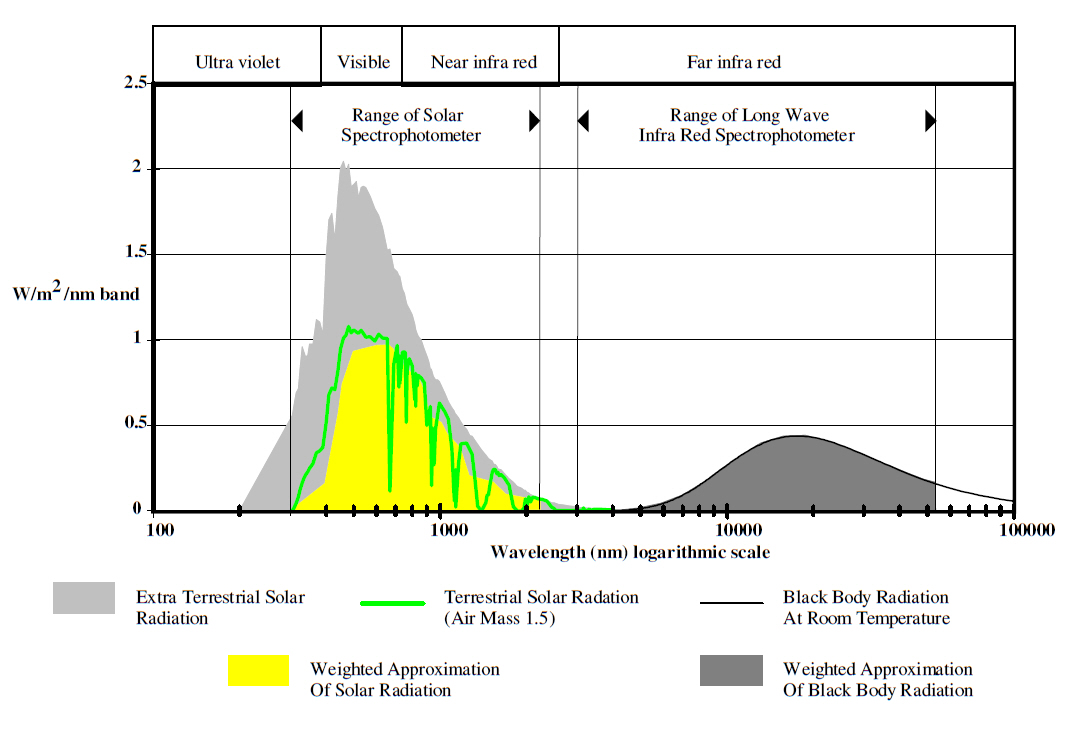Visible light
Visible light (or the visible spectrum) is a form of electromagnetic radiation. The electromagnetic spectrum includes radio waves, microwaves, infrared radiation (IR), visible light, ultraviolet light (UV), X-rays and gamma-rays. Visible light falls within the range of wavelengths from approximately 380 - 740 nanometers (nm), between the infrared and ultraviolet wavebands.
Visible light represents the range of light that is visible to the human eye. Human eyes contain ‘receiver’ cells called 'cones' that can detect wavelengths within this relatively small part of the electromagnetic spectrum.
Visible light comprises a number of colours that are typically categorised as:
- Red (around 650 nm).
- Orange (around 589 nm).
- Yellow (around 570 nm).
- Green (around 510 nm).
- Blue (around 475 nm).
- Indigo (445 nm).
- Violet (around 400 nm).
Combinations of these colours can create other colours. For example, the combination of red light and blue light will create magenta light. The combination of all colours will create white light. The absence of any light from the visible spectrum is perceived as being black.
Typically, when we see a colour, it is as a result of that wavelength of light reflecting from or transmitting through a body towards our eyes, whilst other wavelengths of the visible spectrum are absorbed by the body or reflected away from our eyes.
[edit] Related articles on Designing Buildings
Featured articles and news
A change to adoptive architecture
Effects of global weather warming on architectural detailing, material choice and human interaction.
How big is the problem and what can we do to mitigate the effects?
Overheating guidance and tools for building designers
A number of cool guides to help with the heat.
The UK's Modern Industrial Strategy: A 10 year plan
Previous consultation criticism, current key elements and general support with some persisting reservations.
Building Safety Regulator reforms
New roles, new staff and a new fast track service pave the way for a single construction regulator.
Architectural Technologist CPDs and Communications
CIAT CPD… and how you can do it!
Cooling centres and cool spaces
Managing extreme heat in cities by directing the public to places for heat stress relief and water sources.
Winter gardens: A brief history and warm variations
Extending the season with glass in different forms and terms.
Restoring Great Yarmouth's Winter Gardens
Transforming one of the least sustainable constructions imaginable.
Construction Skills Mission Board launch sector drive
Newly formed government and industry collaboration set strategy for recruiting an additional 100,000 construction workers a year.
New Architects Code comes into effect in September 2025
ARB Architects Code of Conduct and Practice available with ongoing consultation regarding guidance.
Welsh Skills Body (Medr) launches ambitious plan
The new skills body brings together funding and regulation of tertiary education and research for the devolved nation.
Paul Gandy FCIOB announced as next CIOB President
Former Tilbury Douglas CEO takes helm.
UK Infrastructure: A 10 Year Strategy. In brief with reactions
With the National Infrastructure and Service Transformation Authority (NISTA).
Ebenezer Howard: inventor of the garden city. Book review.
Airtightness Topic Guide BSRIA TG 27/2025
Explaining the basics of airtightness, what it is, why it's important, when it's required and how it's carried out.






















